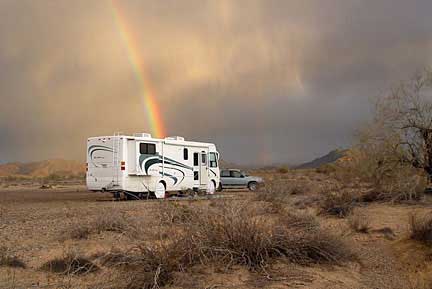Chama-Toltec Scenic Railroad
The Chama-Toltec narrow-gauge railroad runs for 64 miles between Chama New Mexico and Antonito Colorado. It crosses Cumbres Pass at an elevation of 10,015 feet, making it the longest and highest such railroad in the country. Built in 1880 to tap the booming mining business in the area it operated until 1951. Since 1970 it has been operated as a tourist attraction by a joint Colorado/New Mexico commission.

We decided to take the train from Chama to the half-way point and back rather than goingall the way to Antonito because that looked like the most interesting part and because we didn't want to leave the fur-kids cooped up in the RV for too long. The train that day was a "double-header", meaning that it took two locomotives to pull it up the mountain. They put the second locomotive on when there are more than eight cars - we had nine. The second engine droped off after the train completed the steep part of the climb.

Much of the grade going up is at 4 1/2 percent. That does not sound like much but it is steepest grade that trains like this can manage. The boilers are coal-fired and require manual stoking. The two-man engine crew must shovel continuously all the way, taking turns. The engines could be converted to use automatic stokers but they cannot be modernized because they are registered historical objects.

The scenery was magnificent, with lots of brilliant fall color.

The half-way is at at place called Osier Colorado. It was once a small but thriving community but now consists of nothing but a few of the old buildings including the depot, which houses a dining hall where we were given a good hot lunch of turkey and meatloaf, with a wide choice of desserts. After that is as down hill all the back to Chama at 15 to 20 miles per hour.

















